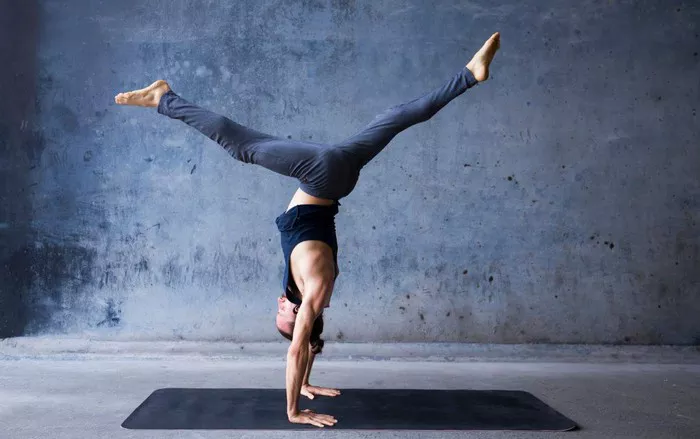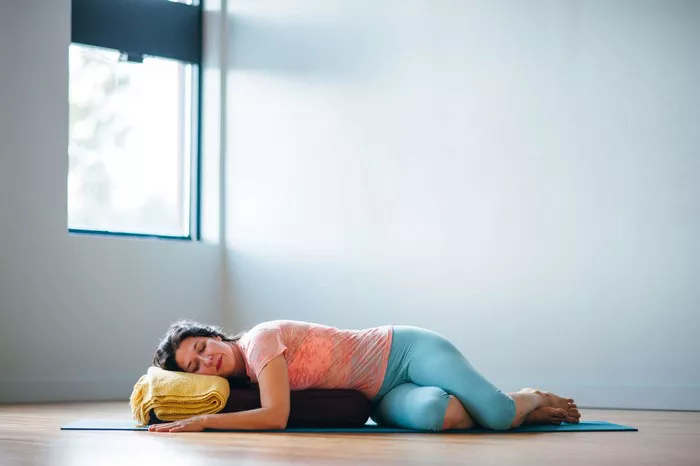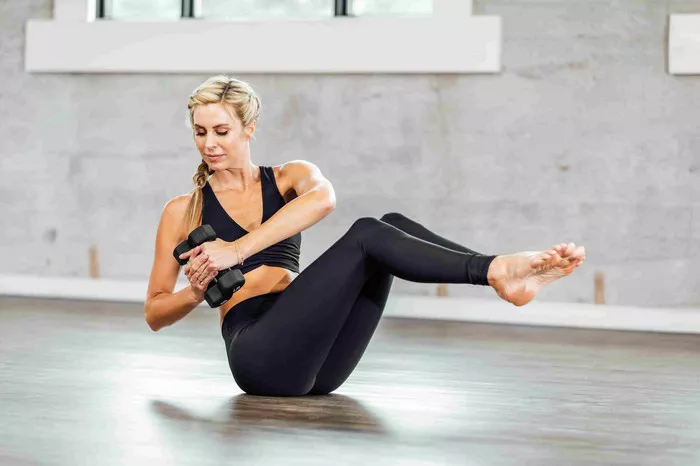Uttanasana, often referred to as Forward Fold or Standing Forward Bend, is a fundamental pose in yoga that offers a wide range of physical and mental benefits. This asana is characterized by standing with the feet hip-width apart, bending forward at the hips, and allowing the upper body to hang down towards the floor. Despite its simplicity, Uttanasana is an incredibly powerful pose that can improve flexibility, strengthen muscles, promote circulation, and calm the mind.
In this article, we will explore the numerous benefits of Uttanasana, breaking down its physical, mental, and energetic advantages. We will also delve into the proper alignment and technique for performing this pose correctly to ensure maximum benefits and prevent injury.
Understanding Uttanasana
Uttanasana comes from the Sanskrit words “Ut” (meaning intense or extended), “Tana” (meaning stretch or lengthen), and “Asana” (meaning pose or posture). The pose involves a forward fold that deeply stretches the hamstrings, calves, and lower back while simultaneously engaging the core and lengthening the spine.
This asana can be done both as a stand-alone posture and as part of a vinyasa flow or Hatha yoga sequence. Whether practiced in isolation or as part of a larger practice, Uttanasana offers several important benefits for your body, mind, and energy system.
Physical Benefits of Uttanasana
1. Improves Flexibility in the Hamstrings and Calves
One of the most well-known benefits of Uttanasana is its ability to increase flexibility in the hamstrings, calves, and the lower back. The forward fold places a deep stretch on the backs of the legs, allowing tight muscles in these areas to lengthen over time. For those with tight hamstrings, Uttanasana can be a useful tool for releasing tension and improving overall flexibility.
This increased flexibility helps with the proper alignment of the pelvis, which can also alleviate discomfort in the lower back. In particular, individuals who sit for long periods may notice a significant improvement in their ability to straighten their legs after practicing Uttanasana regularly.
2. Stretches the Spine and Relieves Tension in the Back
In addition to stretching the legs, Uttanasana is an excellent pose for lengthening the spine and relieving tension in the back. As you fold forward, gravity works to gently stretch the vertebrae, decompressing the spine and creating more space between each vertebra. This can provide relief for those with chronic back pain or stiffness.
Furthermore, Uttanasana helps to open up the lower back, which is often a source of tightness for people who experience stress or poor posture. The gentle stretch combined with the relaxation of the muscles along the spine can provide a sense of relief and release.
3. Strengthens Core Muscles
Although Uttanasana is primarily a stretching pose, it also engages several core muscles. The abdominal muscles are activated to stabilize the torso as you fold forward, preventing you from collapsing or rounding excessively through the back. This engagement of the core helps to develop strength in the deep abdominal muscles, which are essential for maintaining good posture and preventing injuries.
Additionally, by engaging the core, Uttanasana supports the stability of the pelvis, promoting better alignment during the forward fold and enhancing the effectiveness of the stretch.
4. Improves Circulation and Blood Flow
The act of folding forward in Uttanasana helps to increase circulation throughout the body, especially in the lower legs. As blood flow is encouraged toward the head, it helps to bring oxygen and nutrients to the brain, potentially improving cognitive function and focus. This can leave you feeling rejuvenated and more alert after practicing the pose.
Uttanasana also aids in promoting lymphatic drainage, as the inversion-like aspect of the pose encourages the movement of lymph fluid through the body. This contributes to detoxification and can assist in boosting the immune system.
5. Relieves Neck and Shoulder Tension
Uttanasana allows the neck and shoulders to relax and release tension. In a world where many individuals spend hours hunched over computers or looking at smartphones, tension tends to accumulate in the upper body. The forward fold in Uttanasana gives the neck and shoulders a much-needed stretch, helping to alleviate the tightness that often leads to headaches and discomfort.
By allowing the neck to drop gently toward the chest, Uttanasana also helps to lengthen and stretch the muscles of the cervical spine, which can improve range of motion and reduce stiffness in the neck.
6. Promotes Better Posture
Regular practice of Uttanasana can contribute to improved posture by stretching and lengthening the muscles that support proper spinal alignment. As the back and legs become more flexible, you may notice a reduction in slumping or rounding of the shoulders, which are common postural issues.
The lengthening of the spine and strengthening of the core that occurs during Uttanasana work together to create a more upright and balanced posture. This is beneficial not only for yoga practitioners but also for individuals who sit for long periods during work or other daily activities.
Mental and Emotional Benefits of Uttanasana
1. Calms the Mind and Reduces Stress
Uttanasana has a calming and grounding effect on the mind, making it an excellent pose for relieving stress and anxiety. The act of folding forward, combined with deep, mindful breathing, allows the nervous system to enter a state of relaxation. As the body folds and the head drops below the heart, it activates the parasympathetic nervous system, which is responsible for the “rest and digest” response.
This can lead to a reduction in stress levels, lower blood pressure, and a general sense of calm and well-being. For individuals experiencing mental fatigue or anxiety, Uttanasana offers a moment to pause, breathe, and reset.
2. Improves Focus and Clarity
While Uttanasana is often associated with relaxation, it also encourages a sense of mindfulness and presence. As you fold forward and focus on the breath, your attention is drawn away from external distractions and towards the sensations in your body. This helps to cultivate a sense of clarity and mental focus, which can carry over into other areas of life.
The forward fold creates a space for reflection and inward focus, allowing the practitioner to tune in to their own body and mind. This practice of self-awareness can lead to greater emotional stability and clarity.
3. Enhances Emotional Release
Uttanasana can also serve as an emotional release pose. The forward fold position can be deeply therapeutic for releasing pent-up emotions or negative energy. In many yoga traditions, the forward bend symbolizes surrender and letting go, making it a powerful posture for emotional healing.
By physically releasing tension in the body, you may also find that emotions that were previously held in the body are released, resulting in a feeling of emotional lightness and freedom. Practitioners often report a sense of emotional relief after holding Uttanasana for several breaths.
Energetic Benefits of Uttanasana
In addition to its physical and mental benefits, Uttanasana is thought to have positive effects on the body’s energy system. Yoga philosophy teaches that certain postures can help regulate the flow of prana, or life force energy, through the body. Uttanasana, as a forward fold, can have a grounding and balancing effect on the body’s energy.
By encouraging the flow of prana to the head and stimulating the crown chakra, Uttanasana may help to create a sense of connection to the present moment and to the Earth. This grounding effect can help to stabilize the mind and emotions, making Uttanasana an ideal pose for cultivating balance and harmony.
How to Perform Uttanasana: Step-by-Step Instructions
To experience the full benefits of Uttanasana, it’s essential to practice the pose with proper alignment. Here’s a step-by-step guide on how to perform Uttanasana safely and effectively:
Start in Tadasana (Mountain Pose): Stand tall with your feet hip-width apart, arms at your sides, and weight evenly distributed between the balls of your feet and heels. Engage your thighs, lift your chest, and align your head with your spine.
Engage Your Core and Hinge at the Hips: On an inhale, lengthen your spine. As you exhale, gently fold forward at the hips, not from the waist. Keep your core engaged to prevent rounding your lower back. Aim to keep your spine long as you fold forward.
Relax the Neck and Let the Head Hang: Allow your head to hang naturally toward the floor, creating a gentle release in the neck. If your hands don’t reach the floor, place them on your shins, ankles, or use a block to support your hands.
Deepen the Fold: If you’re comfortable, continue to deepen the fold by bringing your chest closer to your thighs. Keep your knees slightly bent if necessary to protect your lower back and hamstrings.
Hold the Pose and Breathe: Stay in Uttanasana for 5–10 breaths or longer, focusing on deep, steady breaths. With each inhale, feel the lengthening of your spine, and with each exhale, gently release any tension in the body.
Come Out of the Pose: To exit the pose, engage your core muscles and slowly rise, stacking your spine one vertebra at a time. Keep your knees slightly bent as you return to a standing position.
Conclusion
Uttanasana is a simple yet highly effective yoga pose that offers a wealth of physical, mental, and energetic benefits. From improving flexibility and strengthening the core to calming the mind and promoting emotional release, Uttanasana is a valuable addition to any yoga practice. By practicing this pose regularly with proper alignment and mindfulness, you can enjoy its many benefits, including increased flexibility, improved posture, reduced stress, and enhanced clarity.
As with any yoga posture, it is important to listen to your body and modify the pose as needed to suit your level of flexibility and experience. With time and consistent practice, Uttanasana can become a transformative tool for deepening your yoga practice and cultivating overall health and well-being.
Related topics:






















